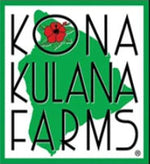But What goes into Harvesting the Best Kona Beans?
Kona beans are one of the most sought-after coffee beans in the world, exclusively grown in the high slopes of the Hualalai and Mauna Loa Mountains on the Big Island of Hawaii. Many have devoted years to growing and harvesting these beans, ensuring each cup delivers the sweet and savory flavor Kona beans are famous for.
As picking season is upon us, what does it take to harvest the best Kona beans?
Pay Close Attention to the Ripeness of Each Bean
Timing is key to harvesting the best batch of coffee beans. Kona buds begin to blossom at the start of the rainy season, usually in the early Spring and Summer. Come August, the bright green pulpy fruit surrounding two coffee beans, called cherries, becomes ripe. Cherries continue to ripen up until February.
Paying close attention to the ripeness level of each bean is essential to the overall quality of the coffee that is produced. Cherries picked before they have fully ripened are not as sweet as matured cherries, and over-ripened ones contribute to a bitter tasting product. An experienced picker knows how to determine if a bean is ready for harvest, and can help safeguard the overall quality of the coffee.
Methodical Picking
While mechanical tools can be used to pick the Kona cherries, these machines cannot be selective when selecting. Aside from the challenge of navigating steep terrain, when devices are used to harvest the beans, a process called "stripping", infected cherries, stems leaves, and old, or premature cherries are all gathered together. The excess organic matter contributes to an inferior and bitter taste to the final coffee product. The only alternative is meticulously picking cherries by hand. Farmers move from bush to bush, plucking cherries row by row. This careful process helps to ensure the superiority of the harvested bean and makes for a great cup of coffee.
Timely Processing
Kona cherries must be processed within twenty-four hours of being picked. The first step is to remove the fully ripened, outer red pulp from the bean. The cherries are passed through pulping machines to strip away their exterior, leaving the inner bean. Next is the fermentation tank. The coffee beans will remain in these tanks anywhere from 12 to 48 hours, depending on the altitude, humidity levels, and size of the beans. While in the fermentation tanks, naturally occurring enzymes eat away at the slick layer coating of the beans that are still attached to the parchment. Once the beans are in the parchment stage, they are then ready for drying, either in large drying drums or by being laid out in the sun. This rapid rendering process ensures the beans are served at their freshest state for optimum flavor.
The craft of growing and harvesting the perfect Kona beans is a labor-intensive process. Exclusively grown on the slopes of the largest volcano in the world, these special beans go through rapid processing and travel hundreds of miles before they make it to your morning cup. The culture and traditions surrounding Kona beans are part of what makes their coffee such a delectable treat.













